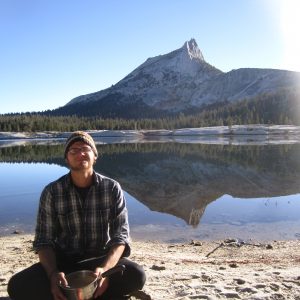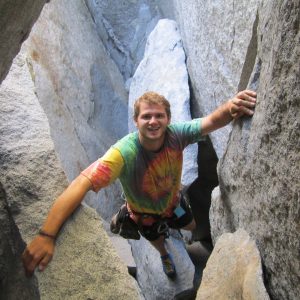I think Bob Dylan got it right when he suggested that “he that is not busy being born, is busy dying.” If you’re idle in body and mind you are just sitting “watching the wheels go ‘round and ‘round”, not making any impact (much less a beneficial one) upon the environment. I ventured in this internship to constantly challenge myself to continue learning and to provide a positive influence on range matters here in Arizona. While I hope this monsoon season will suffice in replenishing the flora of the many ecological sites that have suffered from an extended drought, I am repeatedly reminded by the resilience of arid species to thrive in the harshest of weather conditions. Hailing from the south (Texas that is), I am quickly familiarizing myself with the arid plants of the west and am constantly amazed by how much growth is the result of such minute quantities of water during the sweltering heat of midsummer (e.g. Fouquieria splendens, Ocotillo). My only concession of late is extended A/C use when indoors and an extra military-grade (which basically translates into super-insulation) 3.5 liter Camelbak.
I am thankful for the extra SD-Cards I brought for my digital camera due to the many minerals (Black Tourmaline) and wildlife (Arizona Caltrop – Kallstroemia grandiflora, and the Greater Road Runner to name a few) that I have come across trekking key areas while monitoring grazing allotments. On weekends, I have also had the opportunity to collect bird banding data as an Audubon Society volunteer at the Hassayampa River Preserve in Wickenburg, AZ. The excitement lay in frequent surveys of the mist net (every 20 minutes). The catch of the day since I began volunteering has been a male Vermillion flycatcher. There is great skill involved in removing the animal from the net with grace and dexterity so as little harm as possible may come to the bird (one can easily induce shock by length of removal and strain of the handling, which can lead to death in some cases – some birds are more anxious than others). The Audubon Society hopes to expand protecting breeding/nesting/stop-over resource procurement areas through deriving migration patterns displayed by recapture data. Also there is a great amount of public outreach involved in their banding work; the more minds one can instill the value of this process, and how the materials in the capture and release procedure are not inflicting harm upon the birds, the less often one has to expend limited energy placating the unknowing or ignorant passerby.
How often can someone say they’ve been outdoors these days, when so often the occasional stroll down the hall to the printer is the farthest one ever travels from their desk? It’s refreshing to not be surrounded by so many gratuitous (and often electronic) luxuries. So far, I am proud to exclaim, there have not been any injuries in the field among our crew to lack of preparation or contact with the wilderness. With the lack of humidity, that I have been so acclimated to for most of my life, I often feel like a dried prune wrinkling away under the rays until we get back to the vehicle, blast the AC and gulp frigid water till we get a “brain freeze”. Recently, our crew attended the State Range Meeting in Young, AZ where we enjoyed the southern comfort food from a chuck wagon, camping, and countless presentations on new methods of monitoring/evaluating grazing allotments and research findings of current range management techniques.
While driving countless hours every day to and from a consortium of allotments to find key areas, my field partner and I experienced an unwelcome surprise of a tire blowout upon trying to meander through the wilderness in search of the “main” dirt road (a cumbersome and often unrewarding trial due to the many ATV trails and wildlife/cattle tracks traversing the road; often a ubiquitous feature of multiple-use terrain in the Sonoran Desert) while unknowingly passing over a creosote bush (one shrub most vehicle tires are wary to near due to the brittle nature of its branches and tendency to shed sharp debris puncturable of even the thickest rubber tire). Luckily, we were able to change the tire with the spare included among the safety gear within our field rig and call it a day before the shadow of another unfortunate event cast its gloom over us. Thankfully we were able to find all of the RIP locations and complete the inspection reports once monitoring the sites for compliance to BLM land-use regulations.
However, the fun was just beginning for the week, and with the weather mutating into a gusty torrent of hellish rain clouds devising flash floods of doom for the near future, it was not hard for anyone to predict the next predicament our team was thrust into. One can imagine the amount of moisture the soils of the valleys and tanks retain after such a storm. It was practically a mystery that the trouble did not ensue until the late afternoon of a full day of field work was almost completed. Yet, it was our destiny to ensure that our team was able to think quickly and prudently in cooperative measure once our truck’s tires ceased rotation from lack of grip on the sticky silt rich terrain near an earthen reservoir. We were almost in the clear traveling down a seemingly safe path to check for compliance on an earthen reservoir when we got stuck in the icky bug-filled muck. I am proud to declare we were not filled with trepidation, but following a secure step-by-step procedure to be on our way. Yes, unfortunately we did get filthy with dirt and sweat from digging out the muck from beneath our tread, but we were out of the nasty situation within an hour’s time.
For now, we are almost done monitoring the range included in the work load we were dealt at the beginning of the five months (which included over 10 allotments with about 12 key areas and about double that many range improvements per allotment) and it feels amazing (albeit some part physically) to have – almost – completed the lot in a most thorough, efficient manner.
More to come!… Alyson F.























